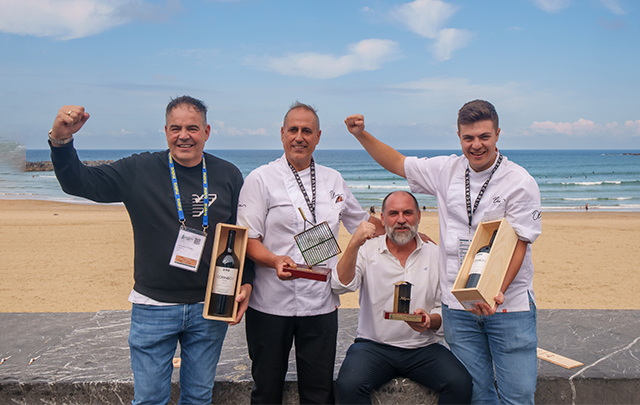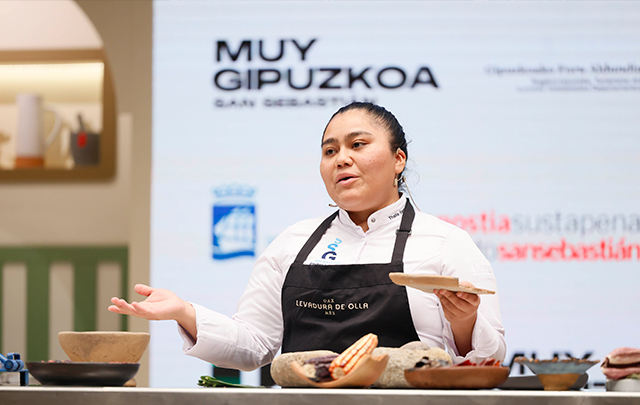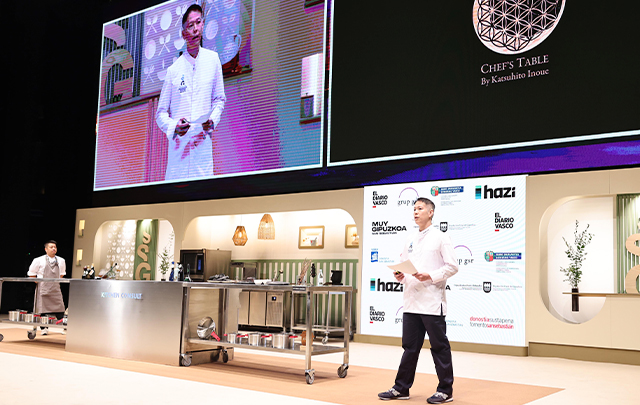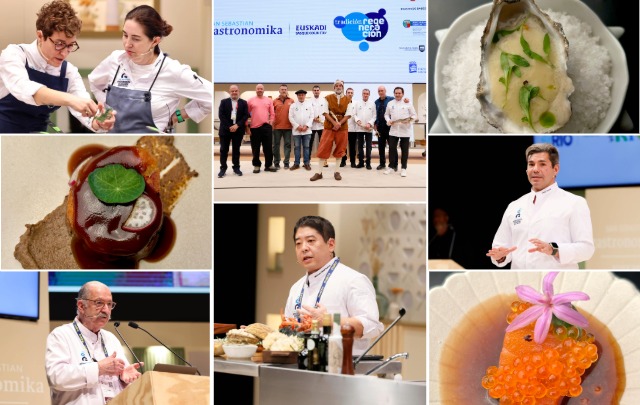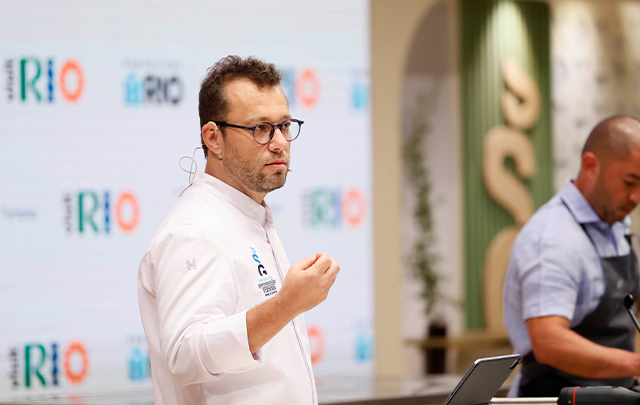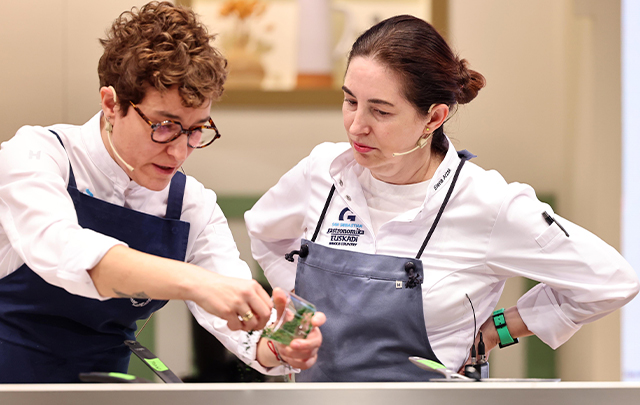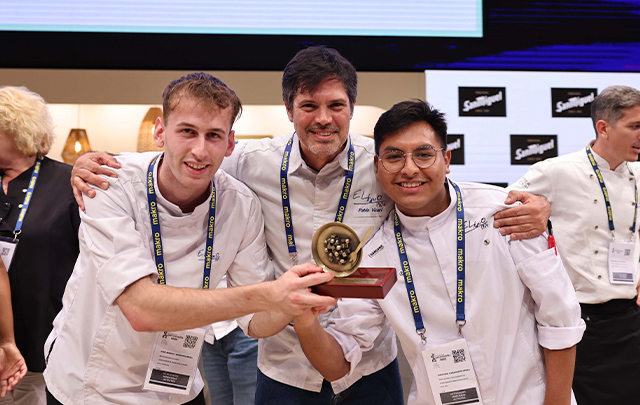News
Obsession, memory and flavour: cuisine that connects tradition and the future

On the final day of San Sebastian Gastronomika-Euskadi Basque Country 2025, chefs and experts from León, Girona, the Basque Culinary Centre and Cagliari came together to demonstrate how authenticity, taste memory and responsible innovation can coexist in exciting and educational dishes. Highlights included José Gordón's cecina, Jordi Roca's vibrant desserts, the creative use of fermentation and Luigi Pomata's sustainable transhumance. The focus was on presenting cuisine as an act of respect for time, produce and the diner's experience.
José Gordón, the founder and soul of El Capricho in Jiménez de Jamuz, León, gave one of the most eagerly awaited presentations of the day, titled 'Obsession and respect: The Philosophy of a Unique Project', a declaration of principles concerning the authenticity and nobility of the product. "My restaurant is a circular project, born in childhood when I learned to make the most of resources," he recalled, evoking humble stews and the first bones and salted bacon. "Before, with little, a lot was done." Gordón defended a vision of cuisine based on truth and time: 'Through authenticity, excellence is achieved.' His speech, full of respect for the land and animals, was also a tribute to oxen and the courageous farmers who persevere, as well as to the breeds that constitute a living heritage on the Iberian Peninsula. ‘Our greatest success is cecina; there is no meat matured like El Capricho's cecina,’ he said. More than just a restaurant, Gordón's project and gastronomic temple is, in his own words, 'a school of grilling' and a lesson in the consistency of passion, sustainability, and artisanal excellence.
Sweet memories
Jordi Roca of El Celler de Can Roca*** (Girona) opened his presentation, 'Sweet Autumn Journey', by evoking nostalgia through colour and flavour. He reminded us that desserts not only satisfy our taste buds, but also transport us back to our childhood through taste memories of ball pools, edible plasticine, children's games and bright colours. This year, he presented four creations that capture the colours of autumn — oranges, chestnuts and sweet potatoes — and embrace the changing season as a vital ingredient. The first dessert takes the form of a teacup containing grated coconut and a 'cagané propio' (a playful creation defined by Roca as his personal version of fun, sweet occultism), with unexpected textural details that play with both the visual and sensory aspects. Next is a colourful dessert inspired by autumnal ochres and oranges, where seasonal fruits, roots, and earthy sweetness intertwine to create a balanced and serene counterpoint.
Beyond taste, Roca's presentation was also a manifesto for experiencing sweet cuisine, rather than just teaching it. “It's something you have to experience; it can't be conveyed through words or images,” he said, affirming that every bite echoes past experiences and memories. The colours he uses are not just visual pigments, but carriers of emotion, and the fruits he collects are not merely cooked, but celebrated. In this 'Sweet Autumn Journey', the pastry chef has demonstrated why his work is considered one of the most notable contributions to this year's Gastronomika: he combines technique, sensitivity, and memory to create dishes that are brief, luminous tales of autumn.
Transition and future
Under the title 'Goe: Fermentation as a Path to a Delicious Future', the Basque Culinary Centre (BCC) brought together its director, Joxe Mari Aizega, as well as professors Cipriano Carrero and Eneko Oizcue, student Laura Ann, and culinary innovation manager John Regefalk. The presentation looked to the future from the perspective of the living science of cooking. Aizega reflected on the BCC's fourteen-year history and announced the imminent opening of Goe, a new space designed to be a hub for creativity, art, and culinary innovation. “Gastronomika is a valuable platform for promoting a delicious future,” he said, emphasising the role of training in driving change and discovery. The conversation revolved around the increasing popularity of fermentation, a process which, as the speakers explained, is now a recurring theme in students' final projects, reflecting a shared interest in understanding natural rhythms and the transformative power of enzymes. To illustrate this, they offered a cheesecake enhanced with enzymes to improve its flavour — a small, symbolic example of how scientific curiosity and technique can create new forms of gastronomic pleasure.
The day in the Auditorium concluded with a talk by Luigi Pomata of Luigi Pomata* in Cagliari, Italy, who offered a contemporary reflection on 'Transhumance and Sustainability', advocating a return to gastronomic models based on respect, reuse, and zero waste. Pomata, a leading figure in Mediterranean bluefin tuna, explained that sustainability is a traditional practice: ‘a simple concept that speaks of respect for raw materials’. He criticised the evolution of mass consumption since the 1980s, advocating a return to the value of scarcity: ‘In times when we had little, we made the most of what we had. That lesson is essential today,’ he concluded.


